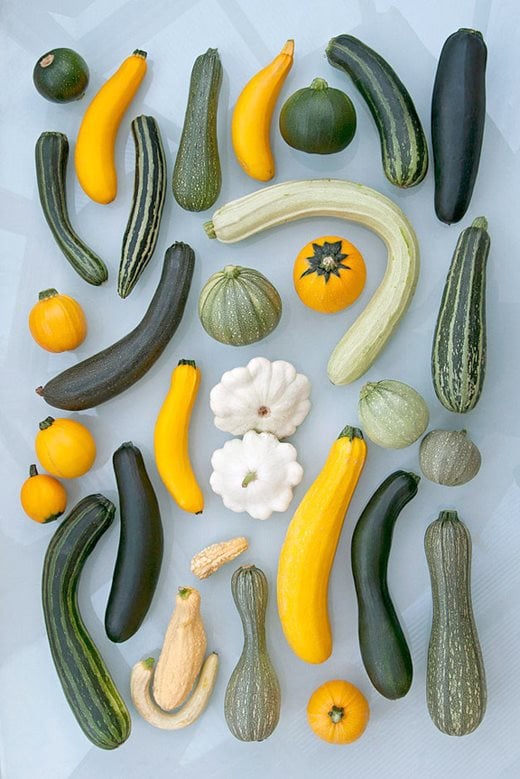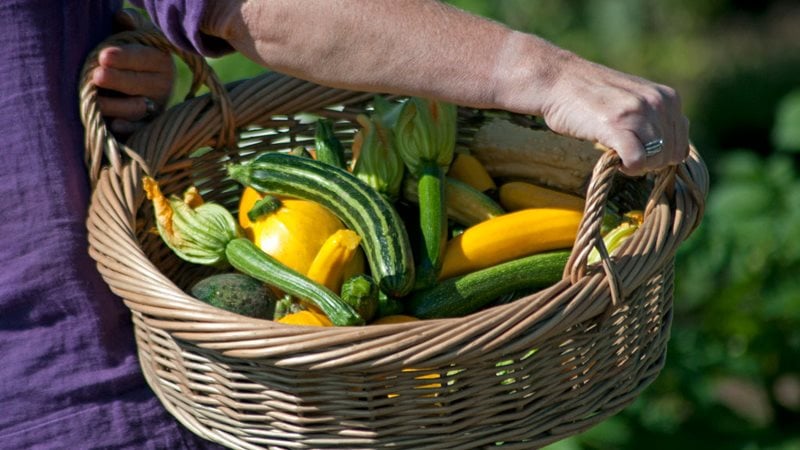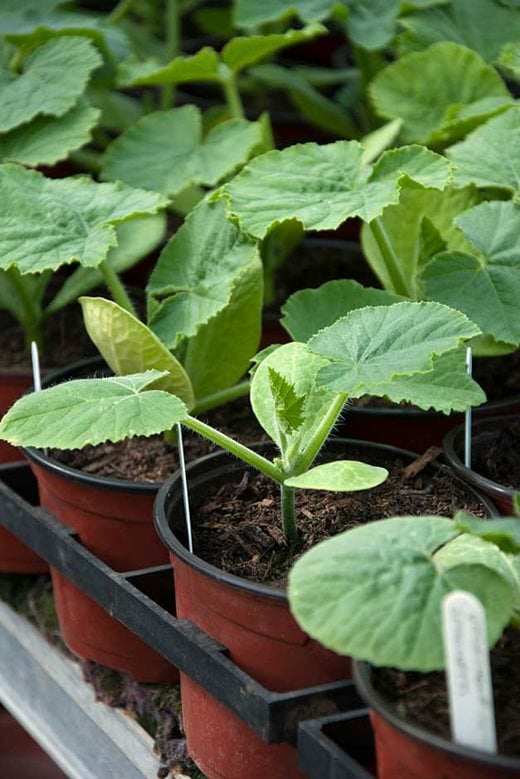Tasty, colourful, and coming in a multitude of shapes and sizes; grow your own to discover the true diversity of courgettes
 Botanical name: Cucurbita pepo
Botanical name: Cucurbita pepo
Origins: North and Central America, via Italy
First cultivated in UK: Second half of the 19th century
Types: The popularity of this easy to grow garden vegetable means there is a wide range to choose from, including yellow and striped types, ball-shaped fruits and even space-saving climbing varieties
Skill level: Beginner
Preferred location and conditions: Full sun on fertile, moisture-retentive soil, high in organic matter
Good for containers: Yes
Harvest time: July-October
Possible problems: Slugs and snails, poor fruit set early in the season, powdery mildew later in the season
Health benefits: Low in calories and good levels of potassium and vitamins C, A and B-6. The skin is a good source of soluble fibre
Potted history
As with all squash varieties, courgettes have their origins in North and Central America, but the green, cylindrical summer squashes that we know and love today were not developed until the second half of the 19th century by growers in northern Italy. These Italian origins led to the other popular name, zucchini (Italian for 'little marrow'), which is still widely used in much of Europe and the US. In the UK, the term courgette is derived from the French ‘courge’, for gourd or marrow.
Courgettes are actually compact bush marrows grown exclusively for their immature fruits, which crop over a long period if harvested regularly. Leave plants unharvested and the fruits will swell to marrow size but the cropping window and overall yield is greatly reduced.
Continued breeding has removed some of the less attractive traits of older varieties. Modern F1 varieties such as 'Endurance', 'Firenze' and 'Tuscany' have very few spines on the leaf stems, making picking easier. Others such as 'Alfresco' and 'Shooting Star' have a higher dry matter content than older types, for better flavour and texture, and a longer storage life. 'Shooting Star' is also the first climbing variety to produce yellow fruit.

Why grow courgettes?
Courgettes are a versatile summer vegetable, cropping easily and prolifically over a long period – you can expect to pick three or four fruits from each plant, each week, at their peak of growth.
One or two plants is usually enough for the average household, meaning the crop takes up little space. Few varieties grow bigger than a metre wide, making courgettes an excellent option for filling gaps in vegetable patches, or for growing in large containers on the patio or balcony. Once cooked into soups or ratatouille, surplus produce can be frozen for use through winter.
 Sowing and growing
Sowing and growing
Courgette seeds can be sown directly outdoors in late May or early June, but for surest results seeds are best started off indoors. Seeds should each be sown in their own small pot of multipurpose compost, 1.5cm (½in) deep, from mid-April to mid May. Yoghurt pots with pierced drainage holes are ideal. Pots should be watered and placed in a warm position, aiming for 15-20°C. Keep moist and seedlings should appear within a week or so. Plants can then be gradually accustomed to outside conditions for planting out after the last frosts in late May/early June and planted 90cm (3ft) apart.
If sowing outside in May, set two seeds per station and offer cloche protection. If both germinate, remove the weaker of the two seedlings. Keep soils moist with regular watering and harvest when the courgettes reach 15-20cm (6-8in).
In poor summer weather the earliest female flowers can fail to set due to a lack of pollinating insects. Hand pollinating can improve early fruit set. Take a male flower (one without a swelling at its base) and brush this against the female flowers (those with a swelling at their base).
By the end of the season, most courgette plants will succumb to powdery mildew. This is seen as a powdery white coating on the foliage. While unsightly it should not prevent the continued cropping of the plants. If this is of concern opt for mildew-resistant varieties such as 'Tuscany' F1, and 'Best of British' F1.
See also
RHS Grow Your Own
RHS advice: how to grow courgettes
Mr Fothergill's

